#wandelweiser group
Text
Jürg Frey / Quatuor Bozzini / Konus Quartett — Continuité Fragilité Résonance (Elsewhere)

Photo by Annette Boutellier
Continuité, fragilité, résonance by Jürg Frey (Quatuor Bozzini / Konus Quartett)
Sometimes a name is also an explanation, and so it is with Continuité Fragilité Résonance. The first word attests to the fact that the piece lasts 51 minutes without a break. The second admits that a listener’s engagement with the music is subject to interruption. The third acknowledges the vertical and spherical aspects of sound since in any moment, the phenomenon you hear might be experienced in ways that have nothing to do with the ongoing march of time, but might drop you into a layered experience or absorb you into an all-encompassing one.
Jürg Frey is part of the Wandelweiser Group, a community of composers and musicians who share a philosophy of taking sound and its counterpart, silence, seriously as essential parts of music and the listening experience. It’s a group of people who seek to understand essences, and then apply that understanding to what they do. If you aren’t aware of that philosophy going into your encounter with this album, don’t worry; the music will teach you what you need to know.
As long as we’re considering associations as engagement-facilitators, it’s worth noting that Continuité Fragilité Résonance was one of three records that Elsewhere released in the same month and which are united by their essential three-ness. While the other two, L’Occhio Del Vedere, by Giovanni Di Domenico, Silvia Tarozzi, and Emmanuel Holterback, and Circles, Reeds, and Memories, by Germaine Sijstermans, Koen Nutters, and Reinier van Houdt, were performed by three musicians each, this album was made by an octet performing another person’s music. But when one notes that the octet is actually composed of two very cohesive entities, the string quartet Quatuor Bozzini and the saxophone quartet Konus Quartett, and that the musicians had contact with Frey during the realization of this piece, its trio aspect takes shape.
Frey’s music is the sort for which the often-abused term, “deceptively simple,” should be reserved. The musicians’ parts, which comprise mostly long tones played at a relaxed pace aren’t that hard. But the mutual attunement necessary to achieve the right balance of sounds requires a cohesion that just can’t happen without investments both in the amount of time to figure out how to play the piece together, and then to sit with it long enough for the players’ collective consciousness to comfortably contain the music’s long form. Nearly a year passed between the first performance of the piece and its recording for this CD, and that time contributed to the integrity of its web of sounds and spaces. It takes a lot of attention and contemplation to get the elements in balance, both moment-to-moment and over the arc of 51 minutes.
A listener should come to this music prepared to have their sense of time gently but effectively disrupted. The titular Fragilité can manifest at any moment, as the listener’s ears grab ahold of a particular texture or quiet gesture and savor it, only to realize that the music has moved on while you have been lingering. So, you listen ahead, or listen more closely, effectively inhabiting varying combinations of past, present and future. Or maybe your experience will be completely different, but that’s a feature, not a bug, with music so matter-of-factly rich in just-rightness. Each sliding screen of string texture, each gleam of sounded brass, each intersection of sounds that merge and sounds that remain distinct, can be absorbed or fallen into depending on where you’re at in your relationship with the music and your own attention span.
Bill Meyer
#Jürg Frey#Quatuor Bozzini#Konus Quartett#Continuité Fragilité Résonance elsewhere#bill meyer#albumreview#dusted magazine#wandelweiser group
1 note
·
View note
Text
Favorite Albums of 2018
My favorite album of the year: Five Dramas of Swollen Emotion for Music and Voice - Isak Sundstrom (Black Sweat)

And the other 99, in random order...
Migration of the Snails - Melodic Energy Commission (Telephone Explosion)
Libra Rising - Okkyung Lee, Ches Smith, Chris Corsano (Hot Cars Warp Records)
Disambiguation - Cruel Diagonals (Drawing Room)
Camizole/Lard Free - self-titled (Souffle Continu)
I Need to Start a Garden - Haley Heynderickx (Mama Bird)
AAMM - “A” Trio & AMM (Al Maslakh)
Captiva - Zeena Parkins (Good Child)
Consuelo - Chesterfield (Mikroton)
Chez Helene - Joelle Leandre & Marc Ducret (Ayler Records)
Disturbio - Angelica Castello (Mikroton)
I’ll Be Here In the Morning - Postcards (Ruptured)
Electronic Music from the Eighties and Nineties - Carl Stone (Unseen Worlds)
Ectotrophia - Happy Rhodes (Numero Group)
Hippo Lite - Drinks (Drag City)
The Air Around Her - Ellen Fullman & Okkyung Lee (1703 Skivbolaget)
Piano Interpretations - Kukuruz Quartet/Julius Eastman (Intakt)
A Day Hanging Dead Between Heaven and Earth - Fred Frith & Hardy Fox (Klanggalerie)
Attica / Coming Together / Les Moutons de Panurge - Frederic Rzewski (Black Sweat)
Runt Vigor - Audrey Chen (Karlrecords)
Raw Silk Uncut Wood - Laurel Halo (Latency)
Cheol-Kkot-Sae - Okkyung Lee (Tzadik)
Ductus Pneumaticus - Phil Minton & Torsten Muller (WhirrbooM)
Ours - Thumbscrew (Cuneiform)
Samara Lubelski / Bill Nace - self-titled (Relative Pitch)
Sun Embassy - Sun Ra Arkestra (Roaratorio)
Raise the River - Robert Dick & Tiffany Chang (RogueArt)
The Faust Tapes - Faust (Superior Viaduct)
Levitate (expanded, remastered) - The Fall (Cherry Red)
Lantskap Logic - Evelyn Davis, Fred Frith, Phillip Greenleaf (Clean Feed)
Improvisations - G.I. Gurdjieff (Fantome Phonographique)
Without - Clara de Asis (Elsewhere)
Thought Gang - self-titled (Sacred Bones)
Fades - Cheer-Accident (Skin Graft)
Uncharted Territories - Dave Holland, Evan Parker, Craig Taborn, Ches Smith (Dare2 Records)
Earlier Music - Officer! (Klanggalerie)
Big Hug/Ocean Fruit - Coffee (Cooling Pie Records)
Nosongs - Marianne Schuppe (Edition Wandelweiser)
An Unintended Legacy - AMM (Matchless)
Everyone Needs a Plan - Matthew Revert & Vanessa Rossetto (Erstwhile)
Imbrication - Jeph Jarman (Unfathomless)
Music of Southern and Northern Laos - Various (Akuphone)
Lightworks - Stop Motion Orchestra (Knock’em Dead)
Studio 105, Paris 1967 - Don Cherry (Hi Hat)
Se (in) De Bos - Book of Air (Granvat)
Traversing Orbits - Mary Halvorson & Joe Morris (RogueArt)
The Smoke - Lolina (self-released)
A l’Abri des Micro-Climats - Guigou Chevenier & Sophie Jausserand (Knock’em Dead/Megaphone)
Rats Don’t Eat Synthesizers - Dwarfs of East Agouza (Akuphone)
A Philosophy Warping, Little By Little That Way Lies a Quagmire - Konstrukt & Keiji Haino (Karlrecords)
Last Man in Europe - Remote Viewers (ReR)
Lot 74 - Solo Improvisations - Derek Bailey (Honest Jon’s)
Totale’s Turns (It’s Now or Never) - The Fall (Superior Viaduct)
Divine Ekstasys - Delphine Dora & Sophie Cooper (Feeding Tube)
In a Convex Mirror - John Zorn (w/Ches Smith & Ikue Mori) (Tzadik)
Pressing Clouds Passing Crowds - Kim Myhr (Hubro)
The Machinic Unconscious - Wendy Eisenberg (Tzadik)
Sisters Sarah Hennies and Lenka Novosedlikova (mappa)
Aviary - Julia Holter
Crystal Spears - Sun Ra (Modern Harmonic)
Recordings 1969-1988 - Ursula Bogner (Faitiche)
God Is More Than Love Can Ever Be - Sun Ra (Cosmic Myth)
Coyotes - Felicia Atkinson (Geographic North)
The Vanity of Trees - Padma Newsome (New Amsterdam)
Utter - Ingrid Laubrock & Tom Rainey (Relative Pitch)
Joy’s Reflection Is Sorrow - Sharron Kraus (Sunstone)
Seed Triangular - Mary Halvorson & Robbie Lee (New Amsterdam)
Distant Voices - Steve Lacy, Yuki Takahashi, Takehisa Kosugi (Aguirre)
Chordis et Machina - Ikue Mori & Christian Ronn (Resipiscent)
Maroon Cloud - Nicole Mitchell (FPE Records)
The Peter Blegvad Bandbox - Peter Blegvad (ReR)
Ghost Forests - Meg Baird & Mary Lattimore (Three Lobed Recordings)
ガラ刑GALAKEI - Tori Kudo (bruit direct disques)
Contemporary Chaos Practices - Ingrid Laubrock (Intakt)
Failed Celestial Creatures - David Grubbs & Taku Unami (Empty Editions)
Lost in Shadows - Ashley Paul (Slip)
The Bray Harp - Jeph Jerman (White Centipede Noise)
The Expanding Universe - Laurie Spiegel (Unseen Worlds)
Uncompahgre - Kirk Knuffke & Ben Goldberg (Relative Pitch)
All the Roots - Hollow Deck (Feeding Tube Records)
Mangelen Min - Building Instrument (Hubro)
Ki-Motion - Mkwaju Ensemble (WRWTFWW)
Kashawa: Early Singles - Stella Chiweshe (Glitterbeat)
Brace for Impact - Joe McPhee & Mats Gustafsson (Corbett vs Dempsey)
Something More - Mikayel Abazyan (self-released)
Code Girl - Mary Halvorson (Firehouse 12)
A Complete and Tonal Disaster - Congs for Brums (self-released)
Persepolis - Iannis Xenakis (Karlrecords)
Beholder - Julia Reidy (A Guide to Saints)
Both Directions at Once: The Lost Album - John Coltrane (Impulse!)
Asperger - Caterina Palazzi | Sudoku Killer (Clean Feed)
Waved Out - Robert Pollard (GBV, Inc)
The Cymbals/Symbols Sessions: NYC 1973 - Sun Ra (Modern Harmonic)
Letters to the Friends of the Late Darcy O’Meara - Matthew Revert (Round Bale)
Canaxis - Holger Czukay (P-Vine Records)
X/Ten - Peter Hammill (Fie!)
Struggle Artist - Meyers (Shelter Press)
Stadium - Eli Keszler (Shelter Press)
Meltdown - Live in Mexico - King Crimson (Panegyric)
Bimini Twist - Alison Statton & Spike (Tiny Global Productions)
3 notes
·
View notes
Text
#47 / Sep.15.2021 / live stream on FB / Slide Pluck Bow
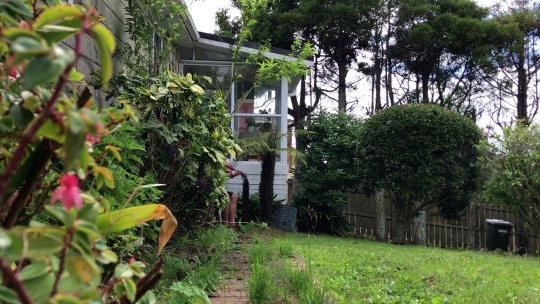
September 15. 2021 / 21:00 - (UTC +02:00)
Live Stream from TiK
Slide Pluck Bow - some sounds for Experimentik
Johnny Chang - video / field recordings
Derek Shirley - cello / double bass
Eric Wong - guitar
part of Monat der zeitgenössischen Musik
FB event
* The video will be published later on our YouTube channel.
——
Slide Pluck Bow
The trio of Derek Shirley, Eric Wong, and Johnny Chang presents a programme of contemporary compositions and sonic dialogues, adapted and specifically arranged for viola, cello and electric guitar. The music which the trio develops highlights the unique combination that is possible through the mastery of instrumental techniques and idiosyncracies, a focus on individual creativity in the collective context and most importantly, a restraint in the overall compositional process.
http://ericszehonwong.tumblr.com/SlidePluckBow
----
Composer-performer JOHNNY CHANG engages in extended explorations surrounding the relationships of sound/listening and the in-between areas of improvisation, composition and performance. Johnny is part of the Wandelweiser composers collective and currently collaborates with: Peter Ablinger, Jürg Frey, Antoine Beuger, Samuel Dunscombe,Keir GoGwilt, Catherine Lamb, Klaus Lang, Mike Majkowski, Phill Niblock, Michael Pisaro, Derek Shirley, Germaine Sijstermans, Taku Sugimoto, Eric Wong.
https://www.wandelweiser.de/johnny-chang.html
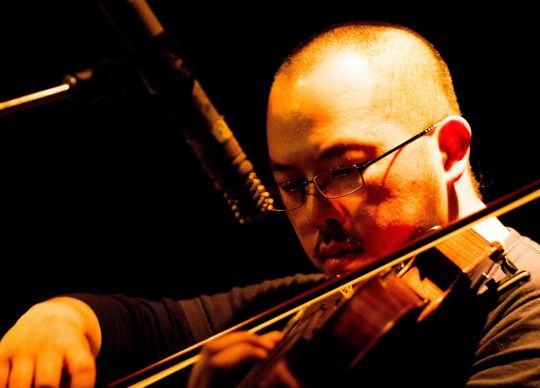
-----
Eric Wong - Born 1981 in Minneapolis, MN, grew up in Hong Kong, studied Psychology at the University of Minnesota, a guitarist and computer musician. Although he has taken some lessons at younger age, he is pretty much an autodidact. His main focuses are sound textures and perception of sound.
Currently based Berlin, he has performed in Germany, Austria, Belgium, Hong Kong, Macau, USA, Taiwan, China, Poland, Switzerland, Czech Republic, and Norway.
He has collaborated with Ulf Langheinrich, Wilmer Chan, Olaf Hochherz, Matthias Müller, Guilherme Rodrigues, Korhan Erel, Seiji Morimoto, Piotr Tkacz, Elma Riza, Mireia Aragone, Johnny Chang, Derek Shirley, Yan Jun, Audrey Chen, Nicolas Wiese, Steve Hui, Michael Thieke, Jenny Ocampo, Jenny Haack, Marcello Lussana, Axel Dörner, Shih-Yang Lee, Liping Ting, Nicola Hein, and many others.
https://www.eric-wong.net/
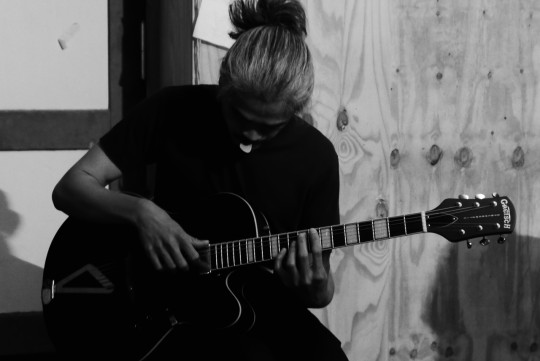
——–
Derek Shirley (1975) Cello/Double Bass
Born in Ottawa, Canada. Since 2001 based in Berlin, Germany, and active in the experimental “echtzeitmusik” music scene focusing on low frequency minimalism in both improvised and composed realms. Performs actively with such groups as Konzert Minimal, The Still, Obliq, monno, Bau des Kabinets, Rishin Singh’s Songs Ensemble and Plants and Empire.
Various collaborations with such musicians as: Sven-Ake Johansson, Andrea Neumann, Chris Abrahams, Steve Heather, Cat Lamb, Antoine Beuger, Margaret Kammerer, Taku Sugimoto, Antoine Chessex, Rebecca Lane, Lucio Capece, Johnny Chang, Annie Gärlid, Eric Wong, Michael Thieke, Robin Hayward, Christina Ertl and Tony Buck.
http://www.soundimplant.com/derekshirley/
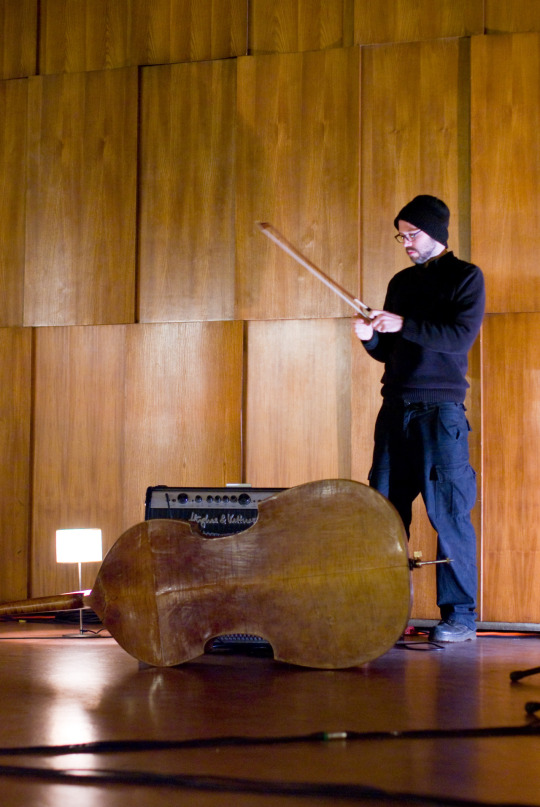
Experimentik 2021 is supported by inm


0 notes
Text
Update
I haven’t written a blog in a long time, so this post is an update of what has happened and what I’m now doing. The progress of my PhD is slowly getting there… It’s hard to balance work, life and studying, especially with lots of changes recently such as getting married and changing jobs! But I am super pleased that I was successful in my PhD upgrade a few months ago!
Here’s an overview of all my composition projects for my PhD so far and what I have planned:
My first project was Amalgamations (2016), which is an open duration (minimum 20 mins.) piece for solo organ. The work consists of two movements, which both comprise graphic scores with the possibility of many combinations of instructions from the key that provides instructions for sounds/stops, pitches, pedal and manual(s). This organ piece has been performed multiple times by Dr Lauren Redhead and also Ben Scott, and recordings of their performances are all on SoundCloud. The score for Amalgamations can be downloaded for free, here. I have recently written a book chapter on form and silence in both notation and performance for the RMA Music and/as Process Study Group, which is currently in the editing process. Also, I will be presenting a paper on form in notation and performance of Amalgamations at the BFE/RMA Research Students’ Conference, University of Sheffield in January 2019.
“As Sure as Time…” (2016-) is an ongoing series of sound events separated by silence (non-sound events). The sound events comprise installations for two or more spoken voices and follow a score that uses a quote from Harper Lee’s Go Set a Watchman (2015). The instructions in the score require the performers or director to create a performance score for each sound event. The quote is split into four sections with instructions for movement, vocal/sound technique and structure. The resulting sound events will be simultaneous solo performances of different lengths. Full performance instructions can be read in the score, which can be downloaded for free here. There have been 8 sound events to date and the majority of them can be heard on SoundCloud. I also wrote about this series in a co-authored article, which can be downloaded for free. I am yet to plan the next event, but I am hoping to arrange one in the new year.
Continuum (2017-2018) is a 90-minute electroacoustic installation, which was premiered by Splinter Cell at the Wintersound Festival at the Sidney Cooper Gallery, Canterbury in January 2018. The work is for four performers (a clarinettist, flautists and two string players who all play the tam-tam) and fixed media in a quadraphonic setup. The installation is an immersive experience and comprises glacial and ethereal sounds. The installation took place thanks to funding from the School of Music and Performing Arts at Canterbury Christ Church University. I also received funding from the university’s Centre for Practice Based Research in the Arts for video documentation that is currently being edited by Colin O’Reilly. Dr Panos Ghikas and his Commercial Music students took audio recordings from the January installation, and I used these recordings to create a 15.1 surround installation for the CPBRA Conference 2018 in the Coleridge Annexe studio space. The Wintersound Festival installation can be heard here.
One of my most recent projects is a collaboration with Nour Souleh, a PhD student in Linguistics studying at CCCU. We met through the CPBRA as she is studying for a practice research PhD too. Nour is Algerian and her first language is Arabic, and I am interested in the different sounds of the Arabic language. I will be creating a five mono channel installation using recordings of Nour reading five of her Arabic poems. Each poem will be designated to a speaker, and each word of the poem will be separated by specific durations of silence. If the listener stands at one speaker, they will hear the full individual poem. However, if the listener stands at the centre of the installation, they will hear the the five poems simultaneously; some words may overlap, and others will sound individually, therefore creating a new meaning. At the same time as the sound installation, Nour will be holding an installation which contributes to her research about otherness.
In January, Ben Horner (sound artist) and I will be collaborating for the 2019 Wintersound Festival; the headphone installation will combine Continuum with a podcast comprising interviews relating to the topic of the festival. Another piece that I am working on is a development of a previous work called Far Infrared (2015/2018). The newest version will have an open instrumentation and will be premiered at the end of season concert for Free Range in March. And, the final project for my PhD will be a set of postcard pieces that will be for open instrumentation, explore silence, breathing and listening, space and performance situations.
Final update… If I can secure some funding, I will be participating in ‘composers meet composers’ with Wandelweiser and Heim.Art next summer! I am really excited about this! I will try to keep more up to date with this blog and write some specific posts about my research in the near future :)
#PhD#phd life#practice research#composition#new music#classical music#research#uni life#wandelweiser#installation#composer#silence
0 notes
Photo
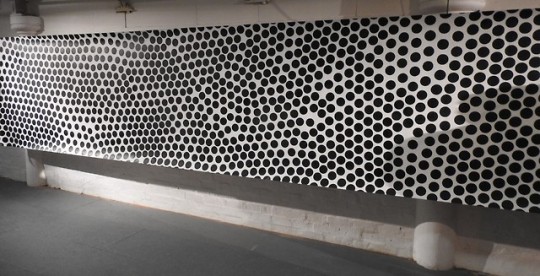
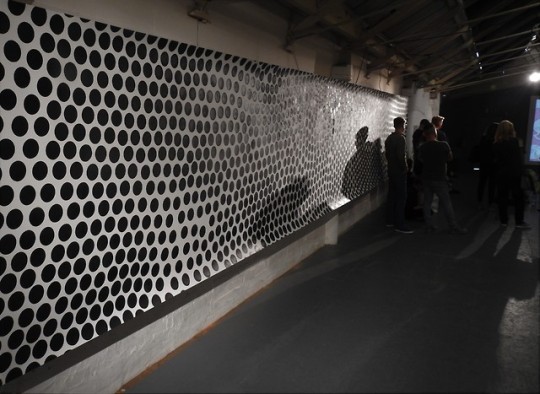
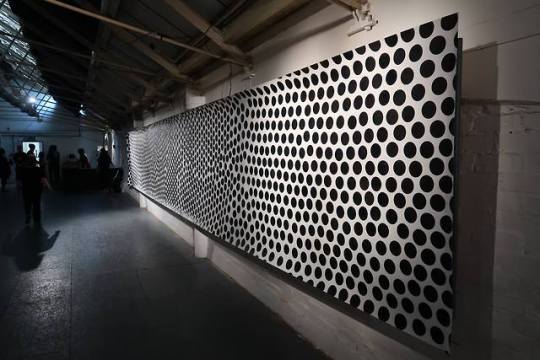

Richard Scott
Discrete continuity, a 2-dimensional space-filling exercise, 2018
spray paint on paper, 1.5 x 10m
This was the centrepiece of my solo exhibition as visual artist-in-residence at Ideas of Noise festival in Birmingham which happened over several venues (this part was in Vivid Projects) at the beginning of August 2018.
The title is a reference to the work of Antoine Beuger (Dutch composer and founder of the Wandelweiser group/movement), who borrowed the phrase “discrete continuity” from his poet friend Oswald Egger.
Beuger’s piece silent harmonies in discrete continuity was written for Marcia Hafif, an American monochrome painter. (You can hear it online here)
photos by Alan Van Wijgerden and Andrew Scott
0 notes
Text
Music Review: die Reihe - Vocoder
die Reihe Vocoder [anòmia; 2018] Rating: 4.5/5 Vocoders are conventionally categorized as a type of voice codec that analyzes and synthesizes the human voice signal for audio data compression, multiplexing, voice encryption, transmission over long distances, simple voice transformation, and more. A portmanteau of “voice” and “encoder,” the technology converts an acoustic signal into a coded form, the complexities and processes of which are articulated by composer Jack Callahan (die Reihe) in his new piece and 12-inch record Vocoder. An “exercise in creating as self-contained a piece as possible, using as little material as possible,” the piece asserts a necessary compositional process through the use of the vocoder, gaining further nuance through the technology’s spectral presence and recognizable sound as it has been heard in the electronic music of the 20th and 21st centuries. If the simple act of hearing implies a medium for sound, Vocoder succeeds in positing the ever-contemporary project of demonstrating how the use of a medium, a technology, and, more generally, the use of text all reflexively suggest a fundamentality of sound as well. These two poles — that of a text and that of a sound — indeed inform the basis for the project of composition and the role of the composer, as Callahan is keenly aware of. Callahan performs under the moniker “die Reihe,” named after Stockhausen’s mid-century composition journal published between 1955 and 1962 devoted to contemporary music, a context I described when reviewing Luke Moldof and Peter Ablinger’s split LP, released by Callahan’s label Bánh Mì Verlag in 2017. Perhaps more readily than any of the releases he has put out on his label, Callahan’s own music under die Reihe exaggerates a precise execution of a compositional approach or technique, which is employed in Vocoder as Callahan speaking through a phase vocoder created in Max/MSP (and Shure SM57 microphone) that is altered in different ways across seven discrete sections. In reviewing Vocoder, I’ll write a bit about the context and conceptual background of Callahan’s project and discuss briefly some of the techniques involved throughout the seven discrete sections of the piece. I’m hesitant to call Callahan a minimalist, despite the fact that he works with simple forms, limited scales, and generally reduced materials. Instead, I’ve started referring to him as “the turnt formalist of Ridgewood, Queens” — his work is turnt, as in it is often being “turned” away from staid notions of the forms they employ (Trap Studies, Housed, Music Demonstration); they are turnt in a fashion that is excessively excited or prepared for the “current event,” that event being the production of new music. Callahan’s work is formalist purely by way of how it is often preoccupied in discussing its form as an implicit aspect of the piece; and, as a result, his work proceeds in a more apparently logical way than most minimalists, often using formulas, permutations, and predictable sequences that allow his work to be defined by their method, a tactic recalling the work of composer Tom Johnson (e.g., “An Hour For Piano,” or “Triple Threat”), as well as his mentor, the Wandelweiser Group composer Jürg Frey. Indeed, in “Section III” of Vocoder, Callahan states “one of the most important aspects of this piece is how the text both explains how the piece functions and itself generates the piece.” As such, Vocoder sits within a canon of text-sound works and Fluxus word pieces, but not necessarily in the way these works led to developments in conceptual poetry (vis-à-vis Dick Higgins or Alison Knowles) or anti-art (Henry Flynt). Rather, the text of Vocoder functions more formally and paradigmatically in the way it has led to developments in music composition — more akin to Alvin Lucier’s I Am Sitting In A Room, where the composer records the sound of their speaking voice only to play it back into the room again and again until the resonant frequencies of the room eventually reinforce themselves as the original text. Whereas formally Vocoder contains more wayward text, humor, and altogether abandon than Lucier would ever have it, similar to Lucier, Vocoder would seem to be a piece that needs no further explanation. Both pieces begin by stating in plain English exactly what they are going to happen and why. In Lucier’s case, this was a radical notion at the time (1969) and one that spawned a whole school of compositional activity in the United States and England. Somehow, even still in 2018, this seems no less radical within the context of “experimental” electronic music as it exists in the emergent youth, noise, dance, and DIY scenes of America — as well as global SoundCloud culture — Callahan’s immediate contexts. Vocoder is the most clearly rendered version of Callahan’s formalism yet; it critiques and extends our contemporary infatuation with the devices and technologies of dance music, specifically how they are rendered in contemporary composition. The piece has an austerity of style and presentation that is a result of his preoccupation with the blurring of form and method — including the resultant manipulation of the conflict between these two terms within the objective use of language. Callahan uses this instructional language as the actual score of the piece. In this way, Vocoder recalls the work of John Baldessari, specifically his Text Paintings. The piece relates to how the conceptual artist decided the solution was to remove his own hand from the construction of the image and to employ a commercial, lifeless style so that the text would impact the viewer without distractions. The music of Vocoder, then, is the text of Vocoder, and the resultant sonic manipulations are a direct manifestation of the articulation of the text. This is the piece: “an exercise in creating as self-contained a piece as possible, using as little material as possible while still maintaining a certain level of interest and coherence.” Musically, it’s relatively pleasurable to listen to how each section errantly slips from the domain of language to that of harmony, specifically within the more complicated sections with more sonic density, such as “Section II” and “Section V,” which both feature a split vocal signal processed by two different vocoders hard panned left and right that randomly switch positions with each other, or the particularly harmonic four-note saw wave chords of “Section VI.” Despite the record’s immediate facticity and primacy of text, its overall sound is a deeply vibrant spectrum of the apparent tones the vocoder technology is capable of producing. Between Callahan’s jaunty deadpan and the various cybernetic manipulations of the discrete sections, there’s also the potential to “tune out” the actual words of the piece to arrive at an altogether psychedelic listening experience. In “Section I,” the repetitive gargle of the frequency-rich carrier signal saw wave at 52hz invites a trance-like, early minimalist drone — a tonality made even more listenable through the precision and clarity of the gesture at play. Likewise, the immediate humor of “Section IV” eventually gives way to pure enjoyment, as the oscillating, slewed pitches turn into acrobatic glissandos that leap and smooth out like smart riffs. The rich B minor pentatonic scale on display in “Section VI” is a clarion tonal voicing of the records overall sound palette — bright, resonant, expressive, yet controlled and carefully measured. The record’s Side B also contains two matter-of-fact dance remixes by DJ Swag and Morgan Jefferson, friends of Callahan that “apply” the raw sound at work on side A. Overall, the enthusiastic sparing of text and music on Vocoder is a brilliant display of their interdependency. The tension between the two also highlights the fraught role of the composer in rendering text as music or, conversely, music as a cultural, readable, or cogent text. Like the technology of the vocoder itself, a sound signal is often encoded as a cultural or readable signification of the original signal for ease of transmission and consumption in the listener. In lieu of hearing a sound “as is,” we often render the original sound as a representational textual image of the sound to consume it more efficiently, to consume it socially, relationally, and within a network of symbolism. As our listening has become encoded by the complex functions of sound in our daily lives — and the entangled webs of relevant meanings and metaphors sounds often contain — our listening is done in a highly accelerated manner mediated by newer technologies and expanded formats even still. Callahan’s Vocoder is a crucial document for how this is playing out in 2018’s cultural landscape, particularly as we witness established contexts for new music, noise music, and dance music collapse into immanent heaps of exhausted, but nonetheless deeply meaningful music. As a composer, Callahan’s work isolates, emphasizes, questions, and demonstrably attempts to surpass the problem of this collapse as a form of musical activism — returning to probe language and expression as sonic materials, and technology, in this case the vocoder, as a micropolitical technique for structural reform in our listening and in our composing of music. http://j.mp/2CTpiwi
0 notes
Photo
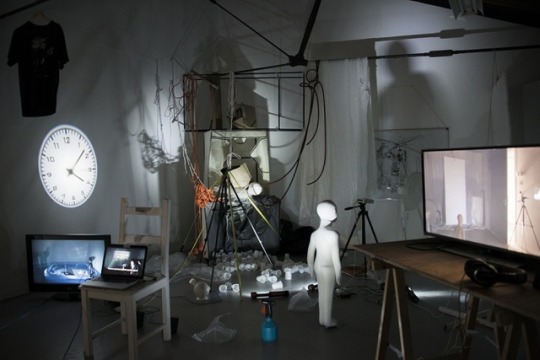


Takeshi Ikeda
is inspired by experimental music (John Cage, Wandelweiser Group, etc.) and hardcore punk rock. These music genres prove that music is more than just sound because they stress other elements as well, such as the listening and feeling audience.
0 notes
Quote
The group formed in 1992, the year of Cage’s death. The founders—Antoine Beuger, of the Netherlands, and Burkhard Schlothauer, of Germany—had met at a far-left commune in Austria, and established a slightly cultish atmosphere from the start. Some Wandelweiser pieces could be mistaken for obscure meditation practices. Beuger’s “night music” can go on for eight or nine hours, and does not discourage listeners from sleeping. Manfred Werder’s “stück 1998” comprises four thousand sheets of music, each page consisting of an array of six-second tones that are interspersed with silences. If played from end to end, the work would last for well over five hundred hours, although so far it has been performed piecemeal, in different cities, page by page. Craig Shepard, who directs the Music for Contemplation series, in New York, undertook a project in which he walked across Switzerland for thirty-one days, writing a solo trumpet piece each day and playing it that evening. In some ways, Wandelweiser is not so much a style as a life style.
Silence Overtakes Sound for the Wandelweiser Collective | The New Yorker
0 notes
Text
Nomi Epstein — shades (Another Timbre)

Making her first appearance on the Another Timbre label, composer Nomi Epstein’s CD shades shares her experimental, Wandelweiser-adjacent music in a program recorded by Apartment House, and by a group assembled for the 2019 Vibrant Matter festival in Berlin. They play three pieces, the title work, which is a string quartet, Sextet, and the bespoke sounds (for Berlin).
Epstein frequently employs synchronized or staggered glissandos to create a fluid, microtonal pitch space. This is particularly evident in shades, where the blurring of sliding duets, for the most part played slowly and relatively softly, creates an intriguing surface with considerable harmonic variation.
Sounds (for Berlin) is made for a heterodox ensemble composed of Christian Kesten (v0ice and whistle), Michiko Ogawa (clarinet), Mieko Klein (violin), and Joseph Houston (piano and whistle). There is a Cagean cast to the proceedings, not dissimilar to the elegiac, late number pieces. Once again, the use of glissandos and microtones, provided by whistles, clarinet bends, and Kesten’s voice, is a layer of the texture. Piano preparations share a clacking, percussive motive. In the second half of Sounds, a slow, soft, harmonic ostinato is prescient of the influence of Morton Feldman that populates the next piece, Sextet.
Sextet also employs glissandos, but not as prevalently as shades or Sounds. A repeated note on the piano and the overtones of a harmonic series played by strings and winds, with microtonal inflections and gradual changes of pitch, is performed in an achingly slow ostinato for twenty-six minutes. It is the most Feldman-like of Epstein’s pieces, but it departs significantly from the chromatic scale, making Sextet a distinct experiment in its own right.
Epstein’s music is unfailingly attractive and elegantly paced. Shades is an excellent introduction to her work.
Christian Carey
1 note
·
View note
Text
Apartment House on Another Timbre: Three Perspectives

If you survey the website of Apartment House, you won’t find an “about” page or any exposition of the ensemble’s history or philosophy. While such reticence is rare these days amongst artistic endeavors of any stripe, the very lack of information tells you something about Apartment House’s raison d’être. It’s all about the work, and the ensemble’s role is to make performances that are about the music, and not Apartment House’s take on the music. This renunciation of ego makes sense when you consider that the ensemble’s name derives from a John Cage composition; one of Cage’s intentions was to envision music that was open to the world and wasn’t about assertions of selfhood. Cellist Anton Lukoszevieze founded the ensemble in 1995, but its recording career didn’t get into gear until 2013.
Since then, the group has released 22 single or double CDs covering work by contemporary composers ranging from Cornelius Cardew to Christian Wolff to Linda Catlin Smith to Ryoko Akama. With a rotating membership, performances range from solos and duos to chamber ensembles. Thirteen were issued by the Another Timbre label, including three titles at once in late 2020, each presenting the music of a single composer — Martin Arnold (b. 1958), Antoine Beuger (b. 1955) and Maya Verlaak (1990). The act of releasing these albums simultaneously affords a chance to consider how Apartment House engages with the different intentions and requirements asserted by each composer. Dusted writers Marc Medwin, Michael Rosenstein and Bill Meyer cover the three recent releases.
Maya Verlaak / Apartment House— All English Music is Greensleeves (Another Timbre)
All English Music is Greensleeves by Maya Verlaak
Múm was an Icelandic group with singers channeling the wisely innocent voices of children while a lush landscape, rife with music boxes and other liquid-crystal sonorities, multihued the adjacent soundspaces. There is something similarly open about this music, something so unpredictably predictable, so comforting, so quietly inclusive! Belgian composer Maya Verlaak delves to the depths of experience’s networks while observing from just far enough to escape the iron grip and rationalizations of memory. This is music in which even the harshest sounds melt into a winning simplicity, a world of sound and sense in symbiosis.
It would be too easy to point toward modality to explain such a beautifully optimistic vision. After all, “All British Music is Greensleeves” tears that increasingly irrelevant construct to shreds in a hurry as two layers of sound, one prerecorded, spin bits of the tune down the dimly lit corridors conjoining memory and reflection. Chord, cluster and motive blur boundaries, even as space ensures a tidy trail of readily identifiable components needling consciousness reluctantly toward recognition. It’s a world with which Ives or Mahler might have made contact, had chamber music been more in their sights, such are the buds and blooms of poly-event amidst distantly lit string writing that refuses to answer Ives’ perennial question. The unfurling harmonies, formed of motives in quasi-counterpoint, are inextricably linked with their kaleidoscopic timbres. Recurrence is both evident and backgrounded but none so blatant as the delicious silences, almost periodic, separating the streamlined multivalences. Fortunately, as with many Apartment House recordings, vibrato is nearly absent.
The “Formation” pieces place a similarly subversive emphasis on relationship so subliminal that a simple listen won’t unlock the door or open the blinds. Any hats doffed toward conventional chord or set are quickly displaced by the gentle but insistent winds of change emanating from a vocal imperative or an intoned repetition. Mark Knoop and Sarah Saviet are in something near dialogue with overlapping technologies guided by a compositional voice whose questions also seek a malleable answer. The openness at the heart of Verlaak’s work stems from the various paths through subversion, re-subversion and integration integral to the majority of these pieces. What, in the case of “Song and Dance,” do performers do when confronted only with the analysis, or justification, for a musical score rather than with the score itself? What happens when the justification becomes the score? How is it possible, practical or desirable to confront musical parameters neither heard nor witnessed? The wonderful thing about such conceptions is that they really form the metanarrative of all artistic endeavor. No art, no matter how explicit, relinquishes all of its secrets, just as no single pitch or sonority, even those as pure as Apartment House offers with staggering consistency, is the actual embodiment of that sound. Composers and performers deal in approximations, and it is to Verlaak’s credit that the processes have been rendered at least partially transparent with such beautifully cooperative forces to give them form and voice.
Marc Medwin
Martin Arnold / Apartment House—Stain Ballads (Another Timbre)
'Stain Ballads' by Martin Arnold
This is the second release on Another Timbre by Canadian composer Martin Arnold, the first being The Spit Veleta a 2017 program of violin and piano solos and duos by Apartment House members Philp Thomas and Mira Benjamin. This time out, Arnold provides the group with a program consisting of a solo, a duo, a quartet, and piece for sextet. Across the four pieces, the composer balances a sense of lyricism with a fascination with the abstracted concept of “formlessness.” In his interview on the Another Timbre site, he puts it this way when asked about the title of the CD. “Stains are… radically specific – always stain-shaped. They might remind one of something – like when one looks at the inkblots of a Rorschach test (though significantly, they don't have Rorschach's added symmetry) – but they don't present a form, a coherent outline, a generic structure that can be abstracted and distilled; with a stain, form and content are the same thing. My work continues to aspire to that condition.” Each of the four pieces here delve in to the way that melodies and themes can be opened up to ride the edges of lyricism and abstraction.
The program opens with “Lutra” for solo cello and humming performed by Anton Lukoszevieze. The piece starts out with arco themes colored with hummed and bowed diaphanous overtones. Hovering at the upper registers of the instrument, threads are introduced, slowly progressing, punctuated occasionally by softly plucked notes. Staying within the same set of registers as well as harmonic and timbral areas, Lukoszevieze lets the notes resonate and serenely decay. In the last section the piece moves to percussively plucked notes with poised slow resolve, fading to hushed resonance in the final moment. “Stain Ballad” follows, orchestrated for cello, piano, viola, two violins, reed organ, and percussion. Arnold voices the various layers in a slow flux, moving in and out of synch with each other. The ensemble does a sterling job of maintaining an overall balance so that no one particular instrument is ever the sole focus. Instead, the various parts wend along as various subsections of the ensemble coalesce and then dissipate in to the mercurial overall flow of the piece. The striated parts adeptly take advantage of the timbral synergies and contrasts of the instruments as one moment, string arco melds with reed organ while in other sections, the percussive attack of Philip Thomas’ piano, the woody retort of Simon Limbrick’s percussion and pizzicato strings shift and shudder across each other.
The pairing of Lukoszevieze’s cello and Mira Benjamin’s violin on “Trousers” dives in to specific techniques like the utilization of multiple mutes, bowing with the wood of the bow, hushed microtones and a sliding sense of harmonics. Arnold talks about it, noting that “the sound of “Trousers” is certainly at odds with a “good” Classical sound: I shut down projection, fullness of tone, resonance, the consistency, stability and predictability of the sound being produced.” Over the course of the 22 minute piece, fragments of melody, muted textures and quavering string overtones play off of each other with measured consideration. Themes play out, get subsumed into the progression of the piece and then resurface. The recording closes out with “Slip,” a quartet for cello, violin, bass clarinet, and piano. The piece takes its name from the Irish slip jig, a jig that is in 9/8 as opposed to the usual 6/8 and a slowed pace accentuates the odd time signature. For the first quarter of the piece, cello, violin and bass clarinet move in woozy unison, lithely navigating the precarious phrasing. Pianist Mark Knoop’s entry, a quarter way in, introduces spare chords that serve to unsettle the phrasing even further, though the quartet never wavers in their assuredly ambling momentum. As the piece proceeds, the four parts veer off from each other, with lines dropping in and out. High-pitched violin arco sounds against crystalline piano chords making way for pizzicato cello and piano. The final section featuring Heather Roche’s dusky bass clarinet playing brings the piece to a transfixing conclusion. On Stain Ballads, Arnold continues to expand on his strategies toward opening up and abstracting melody, balancing compositional form with a sense of “formlessness.” With the members of Apartment House, he has found worthy collaborators.
Michael Rosenstein
Antoine Beuger / Apartment House—Jankélévitch Sextets (Another Timbre)
'jankélévitch sextets' by Antoine Beuger
In 1992, Antoine Beuger cofounded Editions Wandelweiser, the publishing arm of a community of like-minded, post-John Cageian composers. Along the way he has taken on the roles of artistic and managing director. Since Wandelweiser is a collective, his stewardship of the label and publishing arms makes him influential, but not an authoritarian figure. Quite the contrary. On Another Timbre website, there is an interview with Beuger that raises a provocative point about the authority of the score. He compares the current position of a classical composer to a perspective prescribed by Christian theology. The composer hands down rarefied instructions, which he (Beuger emphasizes the masculinity of this approach) best understands, and leaves to others the work of realizing his often very difficult and inscrutable instructions.
With Jankélévitch Sextets, Beuger takes a different approach. It is the fourth in a series of pieces that he wrote for specified numbers of musicians. Each composition deals with relationships implied by that number, and each does so employing mainly quiet, sustained tones. Additionally, each acknowledges a cultural figure; in this case, the Franco-Russian philosopher, Vladimir Jankélévitch. Beuger cites his appreciation for two of Jankélévitch’s ideas. First, music has no itinerary; it flows unpredictably. Second, sounds appear by disappearing. The latter point makes sense if you consider how you notice phenomena only after they stop. One suspects that if Jankélévitch was a fan of mid-20th century American music, he’d have had a lot of time for William Bell’s “You Don’t Miss Your Water (Till The Well Runs Dry).”
Beuger’s piece consists of repeated statements of a close bundle of long tones, each followed by a brief silence, with instruments insinuating themselves or dropping out during each pass. While the name is plural, the music is presented as a single, 64:20 long track, which asks the listener to accompany the ensemble through its entirety. The instrumentation consists of accordion, bassoon, bass clarinet, violin, viola, and double bass, which affords many opportunities for similar-sounding pitches to ease shift between close harmony and beating difference tones. This is not music that tugs at your sleeve; neither ingratiating nor imposing, it’s there if you wish to approach it, cycling through changes that reveal sounds by removing them. The music locates the essence of six-ness not in some contrapuntal exchange that draws attention to all the voices, but in the way that a group can persevere over time by allowing its members opportunities for respite. Apartment House’s treatment of this material captures its subtle balance. It takes discipline to blend sounds so patiently, and even more to do so in a way that don’t ask you to admire their restraint.
Bill Meyer
#dusted magazine#albumreview#apartment house#antoine beuger#vladimir jankélévitch#maya verlaak#martin arnold#another timbre#contemporary composition#marc medwin#michael rosenstein#bill meyer
2 notes
·
View notes
Text
Dust Volume 6, Number 5

Courtney Marie Andrews
The lockdown continues, and live music has disappeared, replaced by a somewhat antiseptic and unsatisfying spate of live streamed shows mostly one person with a guitar on the couch in their living room. We salute the courage and the effort but miss bands and audiences and even the chatter drifting in from the bar area. In the meantime, at least for now, there are still lots of new records vying for our attention. We present this Dust to catch up with some of them. It’s an ecletic survey of contemporary classical, vengeful hip hop, psyche, jazz, folk and metal artists, all continuing to try to navigate a very difficult period. Our writers this time include many of the usual suspects, Bill Meyer, Ray Garraty, Jonathan Shaw, Andrew Forell, Tim Clarke, Jennifer Kelly, Tobias Carroll and Patrick Masterson.
a•pe•ri•od•ic—For (New Focus Recordings)
for a•pe•ri•od•ic by a•pe•ri•od•ic
Silence is a rhythm, too, and a•pe•ri•od•ic dances to it repeatedly throughout their second recording. The Chicago-based ensemble has traversed the new music continuum, performing music by composers from Peter Ablinger to Christian Wolff. Sometimes that silence isn’t quite what you want to hear — the COVID-19 pandemic cut short its tenth anniversary spring season one concert too soon — but it proves to be rich loam from which to grow music on this CD. All four of its pieces were composed specifically for the group by individuals who recognize the merit of non-imposing sounds. That knowledge derives in part from the fact that three of the composers also perform with the group, but also from their long-standing engagement with post-Cage-ian and Wandelweiser material. Director and pianist Nomi Epstein’s descriptively entitled “Combine, Juxtapose, Delayed Overlap” feels like a ceremony intermittently perceived through an opening and closing door. Billie Howard’s “Roll” tucks the composer’s whispering violin behind muted French horn and voice, wringing intensity from the effort one must apply to following its retreating sonorities. Vocalist Kenn Klumpf’s “Triadic Expansions (2)” moves in the other direction, sprouting ivy-like from the slenderest branches of sound. By comparison, Michael Pisaro’s stately “festhalten/loslassen” is a veritable riot of unwinding tonal colors. As the decade ticks towards year eleven, rest assured that a•pe•ri•od•ic is searching for the next promising idea.
Bill Meyer
Agallah — Fuck You The Album (Propain Campain)
Fuck You The Album by Agallah
This is a personal vendetta album. After more than 25 years in the game, Agallah has got to settle the score against the whole world. To say he just has a chip on his shoulder would an understatement. Thirteen songs of pure hate with the title quite properly reflecting its content. In his fight, the rapper strips down all the artistry, including the production. Known for making beats for other hip hop acts, Agallah here not only uses barely serviceable beats, he doesn’t even makes pretense he needs beats. Almost all the tracks work as a capellas. His gruffy voice and arrogant flow don’t need sonic support. And what support can you expect from the world full of phonies, liars, actors, pretenders, cowards and fair weather friends? “Stop pretending, my career is not ending,” he almost screams on “Telling Lies To Me.” If this CD feels like a dinosaur in 2020, then it says that it is not something wrong with this album but with the world.
Ray Garraty
Courtney Marie Andrews — “Burlap String” single (Fat Possum)
Old Flowers by Courtney Marie Andrews
As the eponymous song of 2018’s May Your Kindness Remain amply demonstrated, Courtney Marie Andrews’ pipes are not to be fucked with. But while that was perhaps the most vivid depiction yet of her abilities, the Phoenix native’s delivery can be just as powerful on a muzzle. Such has been her approach thus far with what we’ve heard from Old Flowers, originally slated for an early June release but since pushed back to July (or beyond, who knows). The post-breakup lyrical territory was initially revealed with first single “If I Told,” but it’s the gently loping “Burlap String” I’ve had on repeat for much of the past month. Ever ended a relationship with someone and regretted it? Lush piano and a sighing slide guitar tell you Courtney has without her ever having to utter a word, and much of the song is an illustration of the internal conflict that lingers long after you’ve made the call. I’m inclined to write out the whole second verse here, but it’s the end of the third that lingers as Andrews evokes barely holding back tears: There’s no replacing someone like you. That ensuing pause runs bone-deep, its implication clear — no amount of Mary Oliver can save you from yourself.
Patrick Masterson
Dennis Callaci — The Dead of the Day (Shrimper Records)
youtube
Some albums could be said to hum. In the case of the latest from Dennis Callaci, that’s meant literally: many of the songs on his new album The Dead of the Day feature warm clouds of feedback or droning organ notes. It’s a companion piece to his recent book 100 Cassettes, which features thoughts on musical icons throughout the year. This album’s focus is more insular: some of the songs have a drifting, improvised feel to them. But Callaci also taps into some terrifically subdued songwriting veins here — “Broadway Blues Pt. II” recalls the haunted dub-folk of Souled American, and Franklin Bruno’s piano lends a propulsive dimension to the ruminative title track. And on “Scoreless,” Callaci teams with his Refrigerator bandmate (and brother) Allen Callaci for a song that slowly builds from acoustic foundations to something modestly grandiose. Contrary to what its title might suggest, this album feels very much like a document of one man’s life.
Tobias Carroll
Cameron / Carter / Håker Flaten — Tau Ceti (Astral Spirits)
Tau Ceti by Cameron / Carter / Håker Flaten
Tau Ceti is a planet that is hypothesized to be similar enough to Earth that it could potentially support similar life forms. The three musicians that recorded this tape may come not come from the same system, but they fall into a harmonious orbit around a common circumstance — they were all in the same swanky studio, Halversonics, on a particular winter day in early 2019. One supposes that whatever they were rotating, they move towards the source of heat, since Tau Ceti builds slowly from chill acoustic exploration to a fuzzed-out solar flare. As they progress, abstraction burns away and velocity increases. It’s a gas to hear Ingebrigt Håker Flaten and Lisa Cameron lock in behind Tom Carter’s increasingly gritty sound-bursts.
Bill Meyer
Tim Daisy — Sereno (Relay)
Tim Daisy - Sereno :: music for marimba, turntables and percussion (relay 028) by Tim Daisy
Sometimes the timing of even the most tuned-in drummer is foiled by external circumstances. Sereno was supposed to signal the end of an intense phase of solo practice by Tim Daisy. His intentions for 2020 included making an album of duets and writing music for two ensembles. But at press time he, like everyone else, is hunkered down with his family, and everything he had planned is on hold.
Daisy’s stint as a primarily solo artist coincided with a reconsideration of identity; he wasn’t just a drummer, but a multi-instrumentalist and an orchestrator of electro-acoustic sound. Sereno is split between three elegiac marimba solos that showcase Daisy’s instinct for deliberate melodic development and five much denser constructions for imprecisely tuned radios, playing and skipping records, and Daisy’s strategically reflective drumming. If this record is the only new music that Daisy puts out this year, it leaves us with plenty to think about.
Bill Meyer
Kaja Draksler & Terrie Ex — The Swim (Terp)
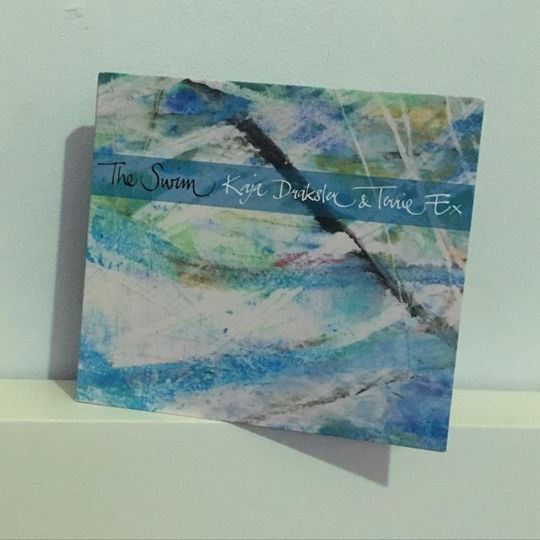
On the surface, this looks like quite the odd couple. Terrie Ex Is a Dutch electric guitarist in his mid-60s who still goes by his punk rock name. He’s a ferocious improviser whose scrabbling instrumental attack incurs intensity from any ensemble that doesn’t want to get bowled over, and he knows more Ethiopian tunes by heart than anyone on your block. Kaja Draksler is a Slovenian pianist exactly half his age whose recent projects include a fast-paced, idiosyncratically balanced trio with Petter Eldh and Christian Lillinger, and an octet for which she sets Robert Frost poems to a combination of chanson, Baroque chamber music, and thorny free improvisation. But neither got where they are by letting fear deter them from a musical challenge, and both of them have a fine awareness that one way of understanding their respective instruments is that they are pieces of wood with wires attached. Given that common understanding of music as a combination of coexisting textures and assertive actions, they work together quite well on this CD, which documents a performance that took place at London’s Café Oto in 2018. Scrape meets sigh, jagged fish-hook pluck meets sparse wire-damped drizzle, instinct meets intuition, and when the disc is done, it’ll seem quite sensible to dive back in and swim the whole length in reverse.
Bill Meyer
Errant — S/T EP (Manatee Rampage Recordings)
errant by errant
Errant is the one-woman project of Rae Amitay. Some listeners of metal music may be familiar with Amitay’s work, as vocalist for death-grind-hybridists Immortal Bird and as drummer for the folk-metal act Thrawsunblat. For Errant, Amitay has created songs and sounds that have little in common with those other bands’ aesthetic extremities. “The Amorphic Burden” may prompt you to recall the melodic black metal that Ludicra was making toward the end of that band’s storied run, or the sludgy drama of Agrimonia’s most recent record. In any case, Errant’s sound skews toward more luminescent atmospheres. Production values are largely pristine; Amitay wants you to hear clearly every string and cymbal strike. It makes sense. She plays a bunch of instruments well, and that’s part of the point: that one woman is producing all the sounds, and all the affect. She ends the EP with a cover of Failure’s “Saturday Savior,” and it’s the least interesting thing on the record. But even there, she presents the listener with something worth hearing. Her clean vocals are lovely, disarmingly so. What may be most impressive about this early iteration of Errant is the extent of Amitay’s talents, and how those talents allow her to encroach on the hyper-masculine territory of the “one-man” act.
Jonathan Shaw
Field Works — Ultrasonic (Temporary Residence)
Ultrasonic by Field Works
Stuart Hyatt’s latest compilation in the Field Works series is an absolute beauty — and timely given it’s being released during a pandemic whose origins may be linked to bats. The field recordings that the contributors used to create the music on Ultrasonic come from the echolocation of bats, and the approaches tend towards rhythmic or atmospheric. At the rhythmic end of the spectrum we have Eluvium’s majestic opener “Dusk Tempi,” akin to his work on Talk Amongst the Trees. Mary Lattimore’s glimmering harp patterns are fitting accompaniment to the chittering bat sounds on “Silver Secrets.” And Kelly Moran’s prepared piano on “Sodalis” sends the listener down a hall of mirrors, chased by gorgeous bass tones. At the more abstract, atmospheric end of the spectrum we have Jefre Cantu-Ledesma’s radiant “Night Swimming.” Christina Vantzou blurs the line between the sounds of modular synthesis and bat sonar on “Music for a Room with Vaulted Ceiling.” And on Sarah Davachi’s “Marion,” the listener is immersed in a luminous halo of nocturnal overtones. Wherever the artists venture, this is a varied yet consistently evocative collection.
Tim Clarke
FMB DZ — The Gift 3 (Fast Money Boyz / EMPIRE)
youtube
The Gift 3 was initially set to be released in December 2019 but was postponed until now. DZ’s “Merry Christmas, pussies!” on one of the tracks doesn’t sound so odd, though, because the whole world has plunged into a constant holiday. The new album continues two trends. It carries on the “ape” theme from the previous album Ape Season. “Ape Activities,” “Keep It on Me” and “No Features” are the grittiest tracks from a disc where the prevalent mood is a sick worry. DZ made it out of the hood but had to be on the lookout as the enemies are out to get him. The other trend is that The Gift 3 continues the ideas of The Gift series. The songs have a usual verse-hook structure, are poppier and more relaxed than on Ape Season. DZ, thankfully, doesn’t try to sing anymore but hires some singers on choruses. The hardest track here is “High Speed” with Rio Da Yung Og where Detroit/Flint duo spit vicious lines.
Ray Garraty
Hala — Red Herring (Cinematic)
youtube
Detroit multi-instrumentalist Ian Ruhala wears his heart dripping from his sleeve on “Red Herring” his latest record as Hala. Skipping from the yacht rock of “Making Me Nervous” to the country blues of “True Colors” via power pop, The Kinks and Tom Petty, Ruhala manages to create a thread with deceptively simple melodies and the sincerity of his delivery. There’s more than a touch of Kevin Barnes in the voice and the delight in throwing genres at the wall to see what sticks and, like Barnes, some of it fails to adhere. The pleasure here is in the sense of eavesdropping on the process and reveling in unexpected flourishes that refuse to be ignored.
Ruhala writes a smooth love song and isn’t afraid to turn up the guitar or address politics on standout “Lies” - “I’m eating breakfast with the fascists/Oh man they stand about ten feet tall/My mouth is bleeding at their proceedings/They get their courage through a plastic straw” It may not be Guthrie but he makes it work through a leavening wit and a mid-tempo vamp straight from the solar plexus. “Red Herring” suffers somewhat from its stylistic roaming but a fundamental big heartedness and willingness to reach makes it an enjoyable trip.
Andrew Forell
Las Kellies — Suck This Tangerine (Fire)
youtube
Suck This Tangerine opens with a loose groove and a grime smeared highlife guitar line, the voice enters with ironic invitations over choppy Gang of Four chords. In the new one from Las Kellies, Argentinian duo Cecilia Kelly and Silvina Costa sling taut bass lines and slash guitars over mutant disco rhythms for 12 tracks of slinky indie dance. Drawing on elements from Leeds, London and the Bronx, Kelly and Costa add dubby space and South American humidity to their sound, to elevate the album beyond the sum of its influences.
Kelly handles guitar and bass, wielding the former like a cross between Andy Gill and Viv Albertine and unfurling loose funky serpents with the latter. Costa swings between ESG and The Bush Tetras and incorporates an array of hand drums that deepen and enliven the rhythmic pulse. There is a palpable and joyful chemistry between the two evidenced by their easy interplay and enhanced by the production that gives clarity and elbowroom to each instrument. If the lyrics can tend toward the perfunctory, they are delivered with a winking insouciance on put downs like “Close Talker” and “Rid Of You”. Suck This Tangerine is a worthy addition to the growing collection of feminist post-punk inspired albums we’ve been dancing to of late.
Andrew Forell
Mint Mile — Ambertron (Comedy Minus One)
Ambertron by Mint Mile
Silkworm, the band, may have ended in 2005 with the death of drummer Michael Dahlquist, but its legacy of slow, gut-socking heaviness, mordant wit and muscular guitar lives on, first in Bottomless Pit and now in Tim Midyett’s new band Ambertron. Midyett’s voice and clangorous baritone guitar is instantly recognizable, of course, to anyone who loved Silkworm, but the band diverges somewhat with the pedal steel played by Justin Brown of Palliard, weaving eerily though the slow buzz and moan of “Likelihood.” Jeff Panall, from Songs:Ohio, plays the hard, heavy drums that undergird these songs, giving them structure and forward motion. Other players include Matthew Barnhart from Tre Orsi and Horward Draper from Shearwater. Greg Normal of Bitter Tears contributes a mournful bit of trumpet to “Fallen Rock,” and Chicago alt-country mainstay Kelly Hogan takes the lead in “Sang.” The music is raw and morose; even dense strings can’t quite lift the gloom in “Christmas Comes and Goes,” a song as raw as late November in Chicago. And yet there’s a sort of resilience in it, a strength that comes through persistence. “If we could only find a way to bank the time we had together,” sings Midyett in “Giving Love,” his hoarse voice full of ragged loss, his guitar raging against it all and not quite beaten down even now.
Jennifer Kelly
Gard Nilssen’s Supersonic Orchestra — If You Listen Carefully the Music Is Yours (Odin)
If You Listen Carefully The Music Is Yours by Gard Nilssen´s Supersonic Orchestra
Perched atop his drum stool, Gard Nilssen sits where styles converge. He’s supplied the controlled boil that drives the free-bop combo Cortex, laid down some heavier beats with Bushman’s Revenge and exemplified long-form lucidity with his own trio, Acoustic Unity. In 2019, the Molde Jazz Festival recognized his versatility and forward perspective by anointing him the artist in residence. Besides showcasing his ongoing projects and accompanying heavy guests from abroad, most notably Bill Frisell, he got to put together a dream project. This 16-piece big band, which includes members of Cortex, Acoustic Unity, and the Trondheim Jazz Orchestra, is it. With the assistance of co-arranger André Roligheten, Nilssen has taken some of his trio’s sturdy melodies and turned them into frameworks for boisterous but subtly colored performances. With three basses and three drummers, this could have been either a mess or an uptight game of “you first,” “no sir after you.” But the rhythm crew shifts easily between swinging unisons and refractory elaborations. Roligheten often plays two saxophones at once in smaller settings, and one suspects that he has a lot to do with the rich colors that the horns paint around the featured soloists.
Bill Meyer
Matthew J. Rolin — Ohio (Garden Portal)
Ohio by Matthew J. Rolin
The ghoulish image on the j-card belies the sounds encoded upon this tape. Matthew J. Rolin is a relative newcomer to the practice of acoustic guitar performance; the earliest release on his Bandcamp page was recorded in late 2017. But he’s catching on fast. Switching between six and twelve-string guitars, he serves up equal measures of ingratiating lyricism and immersive surrender to pure sound. Opener “Red Brick” slots into the former category, with a heart-tugging melody that keeps doling out turns that’ll keep you wondering where it’s going and backtracks that’ll ensure that you never feel lost. “Brooklyn Centre,” on the other hand, grows filaments of string sound out of a pool of prayer bowl resonance centering enough to make you cancel your mindfulness app subscription due to perceived lack of need. Rolin develops ideas situated between these poles over the rest of this brief set, which runs just shy of 28 minutes and definitely leaves one wanting a bit more.
Bill Meyer
Nick Storring — My Magic Dreams Have Lost Their Spell (Orange Milk)
My Magic Dreams Have Lost Their Spell by Nick Storring
What Jim O’Rourke did for the music of Van Dyke Parks and John Fahey on Bad Timing, Nick Storring does for Roberta Flack’s on My Magic Dreams Have Lost Their Spell. The Canadian composer may not have O’Rourke’s name recognition or past membership in a very famous rock band going for him, but consider these parallels. He’s a handy with quite a few instruments, he’s an inveterate assistant to other artists across disciplinary lines, and he functions with equal commitment and fluency in a variety of genres. For this record, his first to be pressed on vinyl (albeit in miniscule numbers), Storring uses the lush string sound of Flack’s 1970s hits as a launching point for deep sonic immersions that are considerably more emotionally oblique than their inspirations’ articulations of loneliness and surrender. When he goes melodic, the cello-led tunes seem to reach for something that they never touch, and when he goes for slow-motion density, the music imparts an experience akin to watching the sort of cinematic experience where you can’t tell if you’re seeing a really slow take or the film has frozen at a single frame.
Bill Meyer
Sunn Trio — Electric Esoterica (Twenty One Eight Two Recording Company)
Electric Esoterica by Sunn Trio
Sunn Trio, from Arizona, makes sprawling, multi-ethnic psychedelia that juxtaposes the scree and groan of heavy improvisational rock with the otherly chords and rhythms of the Middle East. Opener “Alhiruiyn” slicks a trebly sheen over its surging, rampaging improvisations, more in the vein of Black Sun Ensemble than Cem Karaca. But “Majoun” layers antic percussion and tone-shifting bent notes in a limber evocation of the souk. “Roktabija The Promulgator” blasts a strident, swaggering surf riff, about as Arabic as “Miserlou” (which is, in fact, Arabic). “Khons at Karnak” buzzes with hard rock aggression, but shimmies with belly dancing syncopation. Because of the name, the preoccupation with non-Western cultures and the Phoenix mailing address, you might think that Sunn Trio is aligned somehow with Sun City Girls, but no. All kinds of weirdness lurks in the desert out there, lucky for us.
Jennifer Kelly
Turbo, Gunna & Young Thug — “Quarantine Clean” single (Playmakers)
youtube
Despite the subject matter’s potential (ahem) virality, “Quarantine Clean” slipped out almost unnoticed in early April and is the kind of muted performance Young Thug doesn’t get enough credit for (while, curiously, his followers often get too much derision for). For all of Thugger’s hyperfluorescent hijinx over the years that have produced earworms like, say, “That’s All” and “Wyclef Jean,” there’s another side that shows up in stuff like “The Blanguage” and “Freaky” where he lets the words do the work; that’s the subterranean sonic world we’re living in here as he opines on God’s role in the pandemic and why he’s lost so much money but still has to pay for his parents’ penthouse (which: welcome to the revolution, pal). Thug’s acolyte in slime Gunna, meanwhile, does most of the song’s heavy lifting with duties on the first verse and chorus, but it’s pretty hard to tell the two apart, such is the slippery restraint both opt to exercise here. The real star, then, is beatmaker Turbo, whose buoyant anchor melody is complemented by what sounds like a lilting flute. It’s a light touch from all parties, a mellow mood well suited to our time of collective party-eschewing shelter. Run that back in prudence.
Patrick Masterson
Various Artists—Ten Years Gone (A Tribute to Jack Rose) (Tompkins Square)
Ten Years Gone : A Tribute to Jack Rose by Various Artists
A decade on from the too early passing of the great American Primitive/blues/raga player Jack Rose, Arborea’s Buck Curran gathers friends, collaborators and younger artists inspired by Rose for a gorgeous tribute to the master. Mike Gangloff, who played with Rose in Pelt and Black Twig Pickers, leads off with a plaintive, sepia-toned fiddle lament (“The Other Side of Catawbwa”), while next generation experimental droner Prana Crafter closes with an expansive, space folk reverie (“High Country Dynamo”). In between, old friends like Sir Richard Bishop evoke Rose’s full-blown orchestral guitar playing (“By Any Other Name”) while young pickers like Matt Sowell take up the trail forged by Dr. Ragtime. Isasa from Spain and Paulo Laboule Novellino from Italy attest to Rose’s global appeal. It’s mostly guitar, but not entirely; Helena Espvall from Espers contributes a brooding, reverberant “Alcantara” on cello. Curran’s own “Greenfields of America (Spiritual for Jack Rose)” is slow and thoughtful, letting long bent notes ring out with liquid clarity; it’s a hymn and a prayer and a testimony to the wide influence of an artist gone too soon.
Jennifer Kelly
Emily Jane White — Immanent Fire (Talitres)
Immanent Fire by Emily Jane White
Emily Jane White gets tagged as a folk singer, but on this, her sixth full-length, the Oakland songwriter brings a fair amount of goth-tinged drama. Taut string arrangements and big booming drums lift “Infernal” well out of the woman-with-guitar category, and White sounds more like PJ Harvey or even Chelsea Wolfe than a sweet voiced strummer. Immanent Fire sticks, topically, to environmental concerns with track titles like “Washed Away,” “Drowned” and “Metamorphosis.” A foreboding creeps through the songs, pretty as they are, even piano lit “Dew” asks “Does poison drop like the dew?” Arrangements, by Anton Patzner, the composer, arranger and violinist of Foxtails Brigade and Judgment Day, give these cuts weight and heft, punctuating eerie melodies with thick swathes of strings, rumbling percussion and keyboards. The disc culminates in “Light” which begins in a whisper and climaxes in drum-shocked, orchestral swoon. Soothing background music it is not.
Jennifer Kelly
Z-Ro — Quarantine: Social Distancing (1 Deep Entertainment / EMPIRE)
youtube
An unexpected seven-track EP bears an expected title from a Dirty South legend. Z-Ro’s usual topics — trust and loneliness — gain a new meaning in the time of social distancing. To keep away women who only want his money is a necessary precaution now. To be at the corner at the party is a rule for survival. Z-Ro is on his ground counting his dough alone in the house. Earlier he did it so no ‘shife’ (the title of one of the tracks) friends could rob him, now it’s just to obey quarantine rules. The first half of this EP is a bit muddled by unnecessary intros and reggae tunes but the second one hits hard. As always with Z-Ro, the hardest content takes the gentlest form (“Niggas is Hoes” especially is almost a pop song). On the final track “Life of the Party” Boosie Badazz drops by, giving his verdict on the pandemic: “Fuck Corona!”
Ray Garraty
#dust#dusted magazine#aperiodic#agallah#courtney marie andrews#bill meyer#ray garraty#patrick masterson#dennis callaci#tobias carroll#lisa cameron#tom carter#Ingebrigt Håker Flaten#tim daisy#Kaja Draksler#terrie ex#errant#jonathan shaw#field works#tim clarke#fmb dz#hala#andrew forell#las kellies#mint mile#jennifer kelly#gard nilssen#matthew j.rolin#nick storring#sunn trio
7 notes
·
View notes
Text
19. Sep.2018 / Chang + Wong / Slide Pluck Bow

Kawanabe Kyōsai (1831 - 1889)
19.Sep.2018 / 20:30 -
Solo: Jasper Fung - Duct tape, Rubber Bands, Loudspeakers
*due to approaching huge storm, Jasper Fung's flight from HK to Europa has been cancelled and he can not be in Berlin on the 19 of September. so unfortunately we have to change the program.
---
new program
"Rickety Bridge" composed by Ikuhiro Yamagata
Johnny Chang - Viola / Arrangement
Eric Wong - Guitar
---
Slide Pluck Bow
Johnny Chang - Viola
Derek Shirley - Cello / Double Bass
Eric Wong - Guitar
-----------------------------------------------------------------------------------------------
JOHNNY CHANG (1979) Viola /Realisation
Berlin-based composer-performer JOHNNY CHANG engages in extended explorations surrounding the relationships of sound/listening and the in-between areas of improvisation, composition and performance.
Johnny is part of the Wandelweiser composers collective. He currently collaborates with: Peter Ablinger, Chris Newman, Michael Pisaro, Jürg Frey, Antoine Beuger, Catherine Lamb, Radu Malfatti, Mike Majkowski, Derek Shirley, Taku Sugimoto, Stefan Thut, Manfred Werder, Eric Wong.
As composer and performer, his articulated performances have been featured in: Moment Musicaux (Aarau), Sonic Acts Festival / DNK (Amsterdam), Q-O2 workspace (Brussels), reiheM (Cologne), Donaueschinger Musiktage (Donaueschingen), Wandelweiser Klangraum (Düsseldorf), cave12 (Geneva), Stark Bewölkt (Hamburg), Cafe OTO (London), The Wulf (Los Angeles), Cruce Arte y Pensamieto/Whisper Session (Madrid), Klang im Turm (Munich), Umlaut Festival (Berlin&Paris), Dotolim (Seoul), Ftarri (Tokyo), rhiz / Reheat Festival (Vienna) to various experimental music series/venues in Berlin such as ausland, Dzialdov, Errant Bodies, KINDL - Zentrum für zeitgenössische Kunst, Labor Sonor, Quiet Cue, MaerzMusik, N.K., Studio 8, Sophiensaele, Uferstudios, WestGermany.
Since November 2010, Johnny Chang and Koen Nutters initiated and co-curated Konzert Minimal which presents performances and events centred around the music of the Wandelweiser group.
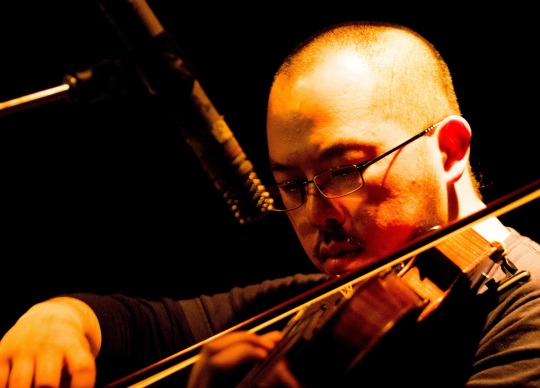
---
ERIC WONG (1981) Guitar
Eric Wong - Born 1981 in Minneapolis, MN, grew up in Hong Kong, studied Psychology at the University of Minnesota, a guitarist and computer musician. Although he has taken some lessons at younger age, he is pretty much an autodidact. His main focuses are sound textures and perception of sound.
Currently based Berlin, he has performed in Germany, Austria, Belgium, Hong Kong, Macau, USA, Taiwan, China, Poland, Switzerland, Czech Republic, and Norway.
He has collaborated with Ulf Langheinrich, Wilmer Chan, Olaf Hochherz, Matthias Müller, Guilherme Rodrigues, Korhan Erel, Seiji Morimoto, Piotr Tkacz, Elma Riza, Mireia Aragone, Johnny Chang, Derek Shirley, Yan Jun, Audrey Chen, Nicolas Wiese, Steve Hui, Michael Thieke, Jenny Ocampo, Jenny Haack, Marcello Lussana, Axel Dörner, Shih-Yang Lee, Liping Ting, Nicola Hein, and many others.
http://ericszehonwong.tumblr.com/

--------
DEREK SHIRLEY (1975) Cello/Double Bass
Born in Ottawa, Canada. Since 2001 based in Berlin, Germany, and active in the experimental “echtzeitmusik” music scene focusing on low frequency minimalism in both improvised and composed realms. Performs actively with such groups as Konzert Minimal, The Still, Obliq, monno, Bau des Kabinets, Rishin Singh’s Songs Ensemble and Plants and Empire.
Various collaborations with such musicians as: Sven-Ake Johansson, Andrea Neumann, Chris Abrahams, Steve Heather, Cat Lamb, Antoine Beuger, Margaret Kammerer, Taku Sugimoto, Antoine Chessex, Rebecca Lane, Lucio Capece, Johnny Chang, Annie Gärlid, Eric Wong, Michael Thieke, Robin Hayward, Christina Ertl and Tony Buck.
http://www.soundimplant.com/derekshirley/
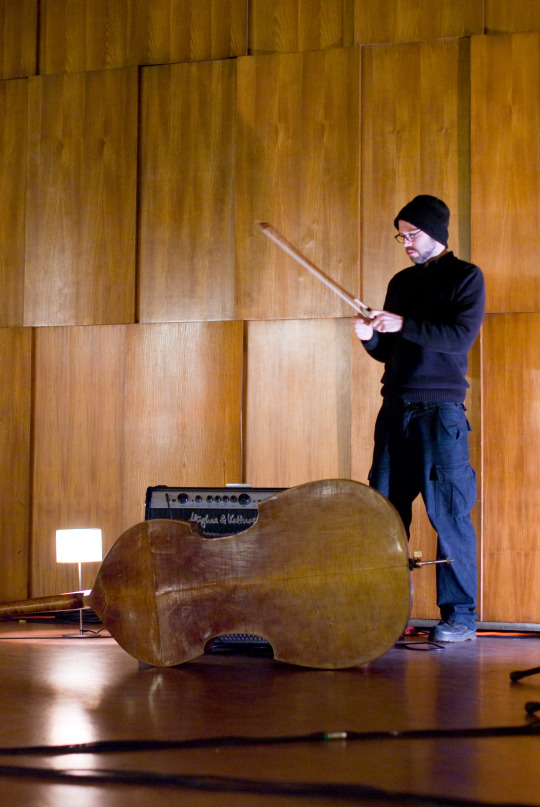
---
Slide Pluck Bow
The trio of Derek Shirley, Eric Wong, and Johnny Chang presents a programme of contemporary compositions and sonic dialogues, adapted and specifically arranged for viola, cello and electric guitar. The music which the trio develops highlights the unique combination that is possible through the mastery of instrumental techniques and idiosyncracies, a focus on individual creativity in the collective context and most importantly, a restraint in the overall compositional process.
http://ericszehonwong.tumblr.com/SlidePluckBow
0 notes
Text
Amalgamations (2016)
I am currently a part-time PhD student at Canterbury Christ Church University in the School of Music and Performing Arts. I started my research in January 2016 and my supervisors are Dr Lauren Redhead and Prof Matt Wright. My PhD is a practice-research project which explores extended duration music using different compositional strategies, performance situations and uses of silence within the field of experimental music.
My first work for this project is called Amalgamations (2016), which is an organ work written for Lauren Redhead’s performance at the ‘Automatronic: New Music for Organ and Electronics’ concert held at CCCU’s chapel, 24th October 2016. In line with my research, the work does not have a specific length and therefore can be played over an extended period of time. The title relates to the indeterminacy of the work and describes the numerous combinations of instructions that can be performed. Influences include John Cage, Morton Feldman, Wandelweiser composers (specifically Antoine Beuger) and Paul Patterson.
Amalgamations comprises two movements that are linked through a set of instructions; there are seven options each for sounds/stops (A–G), pitches (i–vii), manual/s (1–7) and pedals (I–VII). The instructions are influenced by John Hails’ set of instructions for organism i (organ) (2014). The movements of Amalgamations may be performed together or individually. The work is accessible for performances on many different organs as the instructions were created to be applicable for as wide a range of instruments as possible. For example, Amalgamations can be performed on an organ with one or more manuals and the stops are grouped into types of sounds rather than a specific stop.
The notation of the first movement is a constellation-like pattern involving seven circles linked by dashed lines. Within these circles are an instruction for each of the manual/s, pedals, pitches and sounds/stops. A performance of Amalgamations requires the organist to perform compositional processes. The performer must choose a circle to start in and should then proceed to perform using all of the instructions within that circle. Once the performer is ready, they can choose a path using the dashed lines. When the performer reaches another circle, they may choose one of the instructions to then change to. For example, a performer chooses a circle containing instructions VII, ii, G and 2, and then moves to a circle containing III, v, 6 and B, the performer chooses to change one of those instructions, for instance, VII to III. The circles may be visited as many times as the performer wishes and circles may not be visited at all. The performer ends the movement after a duration of their choice.
The second movement contains more open notation as each of the instructions are spread out across a blank space. Like in the first movement, the performer has a choice over the direction of the performance, however, in the second movement there are more options. Instead of the instructions being grouped, they are now separated individually. The performer must choose an instruction to start on, and then, at random, they should continue to choose other instructions. Some instructions will be replaced by others and some will be additional, but until an instruction for the pedal or manual/s is reached, the performance will be silent. The second movement allows for more freedom and therefore will give a wide variety of outcomes combining sound and silence. The use of space within this movement’s notation can be interpreted by the performer and influence the outcome of a performance; the performer can interpret the space as silence, or they could determine the length between each instruction as a measure of time.
Amalgamations explores the different possibilities of the absence of sound. The types of silence differ from one another and these differences are dependent on the performer’s decisions. The silences are an absence of performative sound and can occur before, after or between sounds. The time in which the emptiness occurs affects how it is perceived. If the silence happens before a sound, the listener is waiting in suspense, if it occurs after a sound, the listener hangs on to the sound that was heard before it, and the silence can also be heard as an interruption of sound or as silence interrupted by sound depending on the performer’s interpretation of the instructions. Also, the more extended the silence is, the more the suspense is heightened and the listener is more aware of the sounds from the environment.
So far, the work has had two performances (both by Lauren Redhead) which were installations of different lengths (17 and 43 minutes). I am currently planning a performance of a longer duration with organist Ben Scott.
https://soundcloud.com/sophiestone27/amalgamations-24th-oct-2016
https://soundcloud.com/sophiestone27/amalgamations-19th-november-2016
#practice-based research#practice-research#composer#comtemporary music#experimental music#organ#music#phd#wandelweiser#john cage
0 notes
Text
Amsterdam Wandelweiser Festival – 11th February 2017
Wandelweiser are a group of composers and performers founded by Antoine Beuger (Dutch-born composer and flautist) and Burkhard Schlothauer (German composer and violinist) in 1992, the year of John Cage’s death. The group also have its own publishing company and record label, Edition Wandelweiser. The group does not have a set criteria or aesthetic; however, their interests and works can be linked. It is these specific interests and musical ideas that captivate me as they are interests of my own and are integral to my research.
The Amsterdam Wandelweiser Festival was held at several venues across Amsterdam between the 9th and 12th February 2017. I was fortunate to attend a full day of concerts on the 11th February 2017 at the Orgelpark, a magnificent concert hall situated on the edge of Vondelpark. The Orgelpark contains five large organs and numerous smaller instruments which include a harmonium and two grand pianos.
Although I enjoyed every concert, for this blog I will talk about the performances and discussions that I found most significant.
The first concert was introduced by Dante Boon (Dutch composer and pianist), a member of the collective, who briefly defined Wandelweiser as a group of composers and performers who share an admiration for the work of Cage, particularly 4”33’ (1952). Boon organised the festival which unintentionally marked the twenty-fifth anniversary of the collective.
The first piece, described by Boon as “radical, poetic and deep”, was Beuger’s ins ungebundene (1997) performed by Keiko Shichijo on the organ. For this work, the performer must choose a note at random and play this softly for a minimum of ten minutes and a maximum of forty minutes. The sound must then cease and the performance must end between sixty and ninety minutes. For this performance, Shichijo played a note for approximately twenty minutes which was followed by silence for a further forty minutes. As a listener, the sound of that singular note does not stay constant because the colour of the note changes over time depending on the movement of the listener and in this instance an electronic organ was used, therefore the speakers affected the sound production. The silence in this piece focuses on the emptiness of a sound that existed before it and for those that do not know the work, it remains unclear whether another sound will occur again. Like the sustained note, the sound of the silence changes over time and this is affected by the concert setting. The silence is not an absence of sound entirely, it is an assortment of various sounds from the environment of the concert. The absence of performative sound allows the listener to focus on the sounds of their surroundings. Listening to this type of music in a concert environment can be challenging and this was proven by the audience; I noticed that one gentleman had fallen asleep, one person was on Facebook and another was reading a newspaper. I found that I could enjoy the extended duration of stillness through relaxation and entering a meditative state in which I could enjoying listening to my surroundings without becoming restless. The end of the performance was signified by Shichijo standing and the audience responded with an applause.
The first concert was followed by a discussion about Wandelweiser between the cofounders Beuger and Schlothauer. There are only a selection of sources that discuss the collective, therefore this discussion was valuable to my research as it gave me new and important contextual information that I could include in my thesis. Beuger explained that the ideas and approaches of all the Wandelweiser composers are different but they often include long durations and nothingness/silence. Beuger reinforced that each member of the group admired the work of Cage and not just for silence; some of the composers have an interest in his use of chance and/or algorithms. Wandelweiser was formed as a means for socialising and finding people with similar interests rather than a commercial project. Schlothauer explained that he used the money from working in real estate to fund the collective and to form a record label. He created the word Wandelweiser when brainstorming in Berlin; Wandel meaning ‘change’ and weiser meaning ‘wisely’. The reference to change is significant when associating the group with Cage because of his Music of Changes (1952) which was a pioneering piece of indeterminate music. Beuger explained that the only way to describe the collective is through the name as there is no criteria. Although the composers and performers at the festival described themselves as members, Beuger emphasised that Wandelweiser is not an entity, you cannot be a member and there is no control over it. The pair continued to discuss the purpose of the collective and how it is a means to get together for performances and recording. Originally, they did not know whether making CDs would work for the type of music they created, however, Beuger explained that CDs make sense as it provides a more casual and easily accessible platform as the music could even be treated as background music. I agree that CDs containing music of extended durations work, on the other hand I also feel that attending live performances give a real sense of the composer’s intentions and allows for much deeper listening which is why it was important for me to attend the festival as part of my research and development as a composer.
The second concert contrasted the first as it comprised eight shorter pieces which included Petit fragment de paysage [a small fragment of landscape] (version for piano and organ, 2009) by Jürg Frey (Swiss composer and clarinettist) and for bill karlins (violin and piano, 2006) by Michael Pisaro (American composer and guitarist). After the concert, Frey explained that, rather than a small fragment, he wanted to capture a moment which is not a direct portrayal of the landscape but has a more abstract and unconscious connection through colour and timbre. Pisaro gave an interesting description of the purpose of a fragment by referring to the works of Paul Cézanne (French artist and post-impressionist painter); the “whole painting” is not needed as the fragment gives a representation of what isn’t there. Pisaro dedicated his piece to a passed friend and he explained how he used a fragment in a different way to Frey by quoting thirty-one notes from a piece written by Bill Karlins.
My highlight of the day was André O. Möller’s (German composer and sound artist) musik für vier geparkte orgeln und vier ton-wandler(innen) (2016/2017) which was written specifically for the Orgelpark and four of its organs; two on the balcony and two on the main floor, each on opposite sides of the hall. Möller explained that the performance was an installation and that we should explore the space to hear how the sound changed in different parts of the venue. The installation was an hour long and consisted of intertwined and subtly changing sustained tones produced by using weights on the keys. Each organ had different timbral qualities, therefore the sound at every part of the hall was unique and depended on the direction the listener was facing. The sound was both monumental and beautiful which created a space for deep listening and contemplation.
0 notes